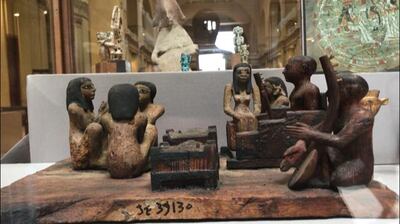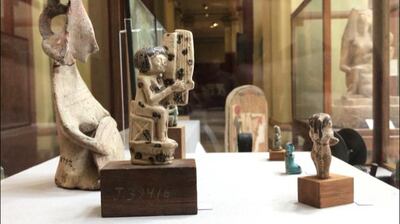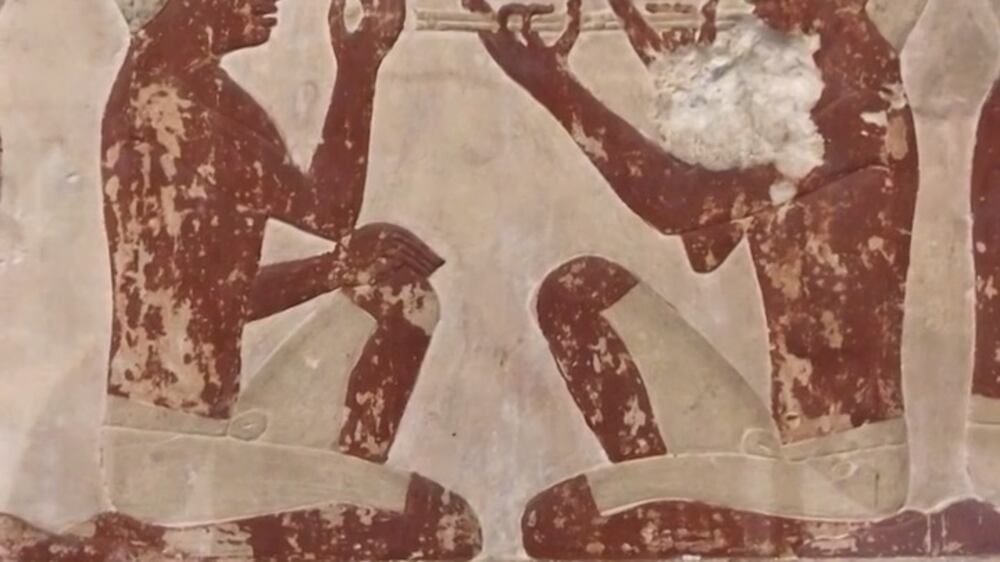In celebration of World Music Day which falls annually on June 21, Cairo's Egyptian Museum has crafted a specially curated display of musical artefacts that tell the story of music throughout ancient Egypt.
Different kinds of musical instruments are well-documented in ancient Egypt, with a number of percussive, string and wind instruments excavated over the decades, said museum curator Shreen Amin.
"There were three predominant genres of music in ancient Egypt: celebratory, funereal and music for everyday life. All three kinds are represented in our curated display," Amin tells The National.
The display also shows pieces made from different materials and decorated in different artistic styles.

“In the display, you can see amulets in the shape of people wielding musical instruments, we have a wooden sculpture depicting a group performing a musical number, and we have included one example each of the most prominent instruments used in ancient Egypt,” says Amin.
Within the display, which includes a total of 21 pieces, is also a number of flutes of various sizes, a sistrum (a percussive instrument that originated in ancient Egypt) and an early form of zills (known as sagat in Arabic), which are small cymbals played by banging two fingers together.
Sabah Abdel Razek, director-general of the museum, says it was important to commemorate World Music Day because of the important role music played in the lives of ancient Egyptians.

“Music was an area of life that was believed to be overseen by prominent deities including Hathor, who is one of the most powerful goddesses of ancient Egypt. Aside from being the goddess of beauty and fertility, she was also believed to hold music and dancing in very high regard,” explains Abdel Razek.
Amulets were symbolic pieces that people took with them to the afterlife. Each amulet was supposed to preserve an aspect of someone’s life after they die, says Amin.
"It was often customary for musicians to be buried with such amulets because of how important music was to them before their death," she adds.
The special display, which is located in the centre of the main museum’s reception, changes every few weeks depending on which prominent holiday is being observed in Egypt at the time.
“Last March in observance of Mother’s Day, we had a display dedicated to motherhood and the various deities that exalted it,” says Amin.
The first World Music Day was celebrated in 1982. This year, more than 120 countries are commemorating the day with free public concerts and other events, all to promote dialogue about music and its importance in connecting people.







